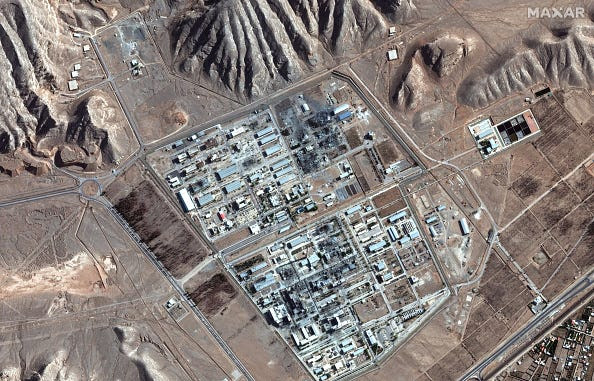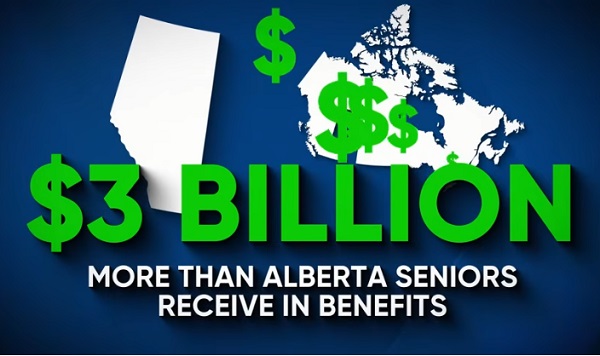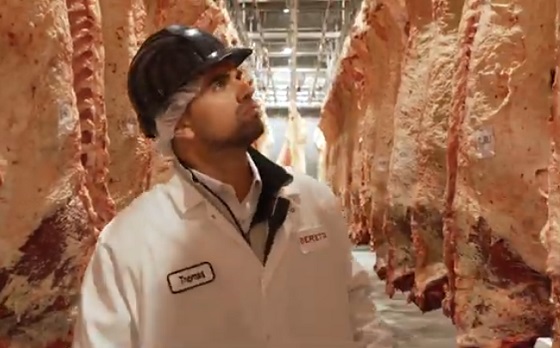International
US fertility rates drop to historic low as young adults choose against having children

From LifeSiteNews
Survey participants cited not finding the right partner, a desire to ‘focus on other things,’ ‘the environment,’ and ‘financial concerns’ among their reasons for deciding against having children.
A new Pew Research Center study found that the U.S. fertility rate reached a historic low in 2023, and fewer Americans are having children than ever before. According to the study, the number of childless American adults below the age of 50 who say they are unlikely to ever have children is now 47 percent (up 10 percentage points from the same demographic in 2018).
Pew researchers surveyed 3,312 American adults ages 18 and older who are not parents, asking them whether or not they would like to have children and why. Interestingly, the answers from the adults aged 18-49 tended to be similar, while they differed from the responses given by the adults aged 50 and older, which also tended to be similar to each other.
There was an exception to this pattern. Respondents in both age groups pointed to infertility, other medical issues, and a partner opposed to having children as reasons for childlessness.
According to the study report, when the respondents were asked why they haven’t had children, “[t]he top reason cited by those ages 50 and older is that it just never happened,” while “[a]dults ages 18 to 49 are most likely to say they just don’t want to have children. These younger adults are also more likely than those in the older group to point to things like wanting to focus on other things, the state of the world or the environment, and financial concerns as major reasons they’re unlikely to have kids.”
Fifty-seven percent of the childless young adults say they chose not to have children, while 31 percent of the childless adults aged 50 and older gave the same response. More women than men under the age of 50 said that they just don’t want children (64 percent versus 50 percent).
The most common reason for not having children given by adults aged 50 and older was, “It just never happened” (39 percent), followed by, “Didn’t find the right partner” (33 percent), “Didn’t want to” (31 percent), “Wanted to focus on other things” (21 percent), and other reasons.
Of the older adults surveyed, 38 percent say that there was a time when they wanted children, however, a shocking 32 percent said that they never wanted children, and 25 percent said they are unsure about whether or not they ever wanted children.
The most common reason for not having children given by adults aged 49 and younger is “Don’t want to” (57 percent), followed by “Want to focus on other things” (44 percent), “Concerns about the state of the world” (38 percent), “Can’t afford to raise a child” (36 percent), and other reasons.
Both young adults and older adults perceive lifestyle advantages as a product of childlessness; however, fewer older adults perceive benefits, while the majority of young adults perceive benefits. Among these perceived benefits include having time for hobbies and interests, affording things they want, being able to save for the future, being successful in their careers, and having an active social life – all things respondents say are possible because they don’t have children.
The survey results show that childless adults aged 50 and older are concerned about their future welfare. According to the study, the majority of older childless Americans worry about having enough money, having someone to care for them, and being lonely, as they age. The American population is older than ever before, and that will pose significant challenges to society in the near future.
Twenty-six percent (26 percent) of the childless Americans aged 49 and younger surveyed in the study cite “climate change” as the reason they are not having children. However, as Elon Musk pointed out last year when fertility rates in the U.S. reached a historic low, the waning population poses an imminent threat to humanity.
Having children makes sense – for individuals, families, and the world at large. As Lila Rose and Dr. Pia de Solenni discussed in a recent podcast episode, all generations – particularly in the younger generations – must be shown that having children is worth it for them personally as well as for society in general.
Reprinted with permission from Live Action.
Business
Dallas mayor invites NYers to first ‘sanctuary city from socialism’

From The Center Square
By
After the self-described socialist Zohran Mamdani won the Democratic primary for mayor in New York, Dallas Mayor Eric Johnson invited New Yorkers and others to move to Dallas.
Mamdani has vowed to implement a wide range of tax increases on corporations and property and to “shift the tax burden” to “richer and whiter neighborhoods.”
New York businesses and individuals have already been relocating to states like Texas, which has no corporate or personal income taxes.
Johnson, a Black mayor and former Democrat, switched parties to become a Republican in 2023 after opposing a city council tax hike, The Center Square reported.
“Dear Concerned New York City Resident or Business Owner: Don’t panic,” Johnson said. “Just move to Dallas, where we strongly support our police, value our partners in the business community, embrace free markets, shun excessive regulation, and protect the American Dream!”
Fortune 500 companies and others in recent years continue to relocate their headquarters to Dallas; it’s also home to the new Texas Stock Exchange (TXSE). The TXSE will provide an alternative to the New York Stock Exchange and Nasdaq and there are already more finance professionals in Texas than in New York, TXSE Group Inc. founder and CEO James Lee argues.
From 2020-2023, the Dallas-Fort Worth-Arlington MSA reported the greatest percentage of growth in the country of 34%, The Center Square reported.
Johnson on Thursday continued his invitation to New Yorkers and others living in “socialist” sanctuary cities, saying on social media, “If your city is (or is about to be) a sanctuary for criminals, mayhem, job-killing regulations, and failed socialist experiments, I have a modest invitation for you: MOVE TO DALLAS. You can call us the nation’s first official ‘Sanctuary City from Socialism.’”
“We value free enterprise, law and order, and our first responders. Common sense and the American Dream still reside here. We have all your big-city comforts and conveniences without the suffocating vice grip of government bureaucrats.”
As many Democratic-led cities joined a movement to defund their police departments, Johnson prioritized police funding and supporting law and order.
“Back in the 1800s, people moving to Texas for greater opportunities would etch ‘GTT’ for ‘Gone to Texas’ on their doors moving to the Mexican colony of Tejas,” Johnson continued, referring to Americans who moved to the Mexican colony of Tejas to acquire land grants from the Mexican government.
“If you’re a New Yorker heading to Dallas, maybe try ‘GTD’ to let fellow lovers of law and order know where you’ve gone,” Johnson said.
Modern-day GTT movers, including a large number of New Yorkers, cite high personal income taxes, high property taxes, high costs of living, high crime, and other factors as their reasons for leaving their states and moving to Texas, according to multiple reports over the last few years.
In response to Johnson’s invitation, Gov. Greg Abbott said, “Dallas is the first self-declared “Sanctuary City from Socialism. The State of Texas will provide whatever support is needed to fulfill that mission.”
The governor has already been doing this by signing pro-business bills into law and awarding Texas Enterprise Grants to businesses that relocate or expand operations in Texas, many of which are doing so in the Dallas area.
“Texas truly is the Best State for Business and stands as a model for the nation,” Abbott said. “Freedom is a magnet, and Texas offers entrepreneurs and hardworking Texans the freedom to succeed. When choosing where to relocate or expand their businesses, more innovative industry leaders recognize the competitive advantages found only in Texas. The nation’s leading CEOs continually cite our pro-growth economic policies – with no corporate income tax and no personal income tax – along with our young, skilled, diverse, and growing workforce, easy access to global markets, robust infrastructure, and predictable business-friendly regulations.”
conflict
US airstrike on Iran’s nuclear facilities. Was it obliteration?

A satellite image of the Isfahan nuclear research center in Iran shows visible damage to structures and nearby tunnel entrances from recent US airstrikes. / Satellite image (c) 2025 Maxar Technologies.
 Seymour Hersh
Seymour Hersh
The US attack on Iran may not have wiped out its nuclear ambitions but it did set them back years
I started my career in journalism during the early 1960s as a reporter for the City News Bureau of Chicago, a now long-gone local news agency that was set up by the Chicago newspapers in the 1890s to cover the police and fire departments, City Hall, the courts, the morgue, and so on. It was a training ground, and the essential message for its aspiring reporters was: “If your mother says she loves you, check it out.”
It was a message I wish our cable networks would take to heart. CNN and MSNBC, basing their reporting on an alleged Defense Intelligence Agency analysis, have consistently reported that the Air Force raids in Iran on June 22 did not accomplish their primary goal: total destruction of Iran’s nuclear-weapons capacity. US newspapers also joined in, but it was the two nominally liberal cable channels, with their dislike—make that contempt—for President Donald Trump, that drove the early coverage.
There was no DIA analysis per se. All US units that engage in combat must file an “after-action report” to the DIA after a military engagement. In this case, the report would have come from the US Central Command, located at MacDill Air Force base in Tampa, Florida. CENTCOM is responsible for all US military operations in the Middle East, Egypt, Central Asia, Afghanistan, and Pakistan. One US official involved in the process told me that “the first thing out of the box is you have to tell your boss what happened.” It was that initial report of the bombing attack that was forwarded to DIA headquarters along the Potomac River in Washington and copied or summarized by someone not authorized to do so and sent to the various media outlets.
The view of many who were involved in the planning and execution of the mission is that the report was summarized and leaked “for political purposes”—to cast immediate doubt on the success of the mission. The early reports went so far as to suggest that Iran’s nuclear program has survived incapacitation by the attack. Seven US B-2 “Spirit” bombers, each carrying two deep-penetration “bunker-busters” weighing 30,000 pounds, had flown without challenge from their base in Missouri to the primary target: Iran’s Fordo nuclear facility, concealed deep inside a mountain twenty miles north of the city of Qom.
The planning for the attack began with the knowledge that the main target—the working area of the nuclear program—was buried at least 260 feet below the rocky surface at Fordo. The gas centrifuges spinning there were repeatedly enriching uranium, in what is known as a cascade, not to weapons-grade level—uranium-235 isotopes enriched to 90 percent—but to 60 percent. Further processing to create weapons grade uranium, if Iran chose to do so, could be done in a matter of weeks, or less. The Air Force planning group had also been informed before the bombing raid, most likely by the Israelis, who have a vast spy network in Iran, that more than 450 pounds of the enriched gas stored at Fordo had been shipped to safety at another vital Iranian nuclear site at Isfahan, 215 miles south of Tehran. Isfahan was the only known facility in Iran capable of converting the Fordo gas into a highly enriched metal—a critical early stage of building the bomb. Isfahan also was a separate target of the US attack on Fordo, and was pulverized by Tomahawk missiles fired by a U.S. submarine operating in the Gulf of Aden, off Yemen.
As a journalist who for decades has covered the nascent nuclear crisis in the Middle East, it seemed clear to me and to informed friends I have in Washington and Israel that if Fordo somehow survived its bunker-buster attack, as was initially suggested, and continued to enrich more uranium, Isfahan would not. No enrichment, no Iranian bomb.
I’ve been frustrated and angry at cable news coverage for years, and that includes Fox News, too, and decided to try and find the real story. If your mother says she loves you, check it out. And I checked out enough of it to share.
I was told that “the first question for the American planners was how big was the actual workspace at Fordo? Was it a structure? We had to find that out before we got rid of it.” Some of the planners estimated that the working space “was the size of two hockey rinks: 200 feet long and 85 feet wide.” It came to 34,000 square feet. The height of the underground working space was assumed to be ten-and-a-half feet—I was not told the genesis of that assumption—and the size of the target was determined to be 357,000 cubic feet.
The next step was to measure the power of the dozen or more bunker-busters that were planned to be “carefully spaced and dropped” by the US B-2 bombers, using the most advanced guidance systems. (During one high-level session in Washington, one of the Air Force planners was asked what would happen if the B-2’s guidance systems were corrupted by an outside signal. “We’d miss the target” was the answer.)
I was assured that even if the rough estimate of the working space at Fordo was far off, the bombers targeting Fordo each carried a 30,000-pound bomb with an explosive payload of as much as five thousand pounds, which was more than enough to pulverize the mythical hockey rinks, or even a much larger working space.
Some of the bombs were also outfitted with what is known as a hard target void sensing fuze, which enabled the bombs to penetrate multiple layers of a site like Fordo before detonating. This would maximize the destructive effect. Each bomb, dropped in sequence, would create a force of rubble that would cause increasing havoc in the working areas deep inside the mountain.
“The bombs made their own hole. We built a 30,000-pound steel bullet,” the official told me, referring with pride to the bunker-busters.
Most important, he said, was that there were no post-strike hints detected of radioactivity—more evidence that the 450 pounds of enriched uranium had been moved from Fordo to the reprocessing site at Isfahan prior to the US attack there, which was code-named “Midnight Hammer.” That operation included a third US strike at yet another nuclear facility at Natanz.
“The Air Force got everything on the hit list,” the official told me. “Even if Iran rebuilds some centrifuges, it will still need Isfahan. There is no conversion capability without it.”
Why not, I asked, tell the public about the success of the raid and the fact that Iran no longer has a potential nuclear weapon?
The answer: “There will be a top-secret report about all of this, but we don’t tell people how hard we work. We tell the public what we think it wants to hear.”
The US official, asked about the future of the Iranian nuclear program, quickly acknowledged that “there is a communication problem” when it comes to the fate of the program.
The intent of the strike planners, he said, “was to prevent the Iranians from building a nuclear weapon in the near term—a year or so—with the hope they would not try again. The clear understanding was that there was no expectation to ‘obliterate’ every aspect of their nuclear program. We don’t even know what that is.
“Obliteration means the glass—[eliminating] Iran’s nuclear program—is full. The planning and the results are the glass is half-full. For Trump critics, the results are the glass is half-empty—the centrifuges may have survived and four hundred pounds of 60 percent enriched uranium are missing. The bombs could not be assured to penetrate the centrifuge chamber . . . too deep, but they could cover them up [with rocks and other bomb debris] and in the process cause unknown damage to them.
“Whether the 60 percent [enriched uranium] was there or not is irrelevant because without centrifuges they cannot refine it to weapons grade. Add to this the research and refinement and conversion from gas to metal—required for a bomb—at Isfahan are also gone.
“Results? Glass is half-full . . . a couple of years of respite and uncertain future. So now Trump’s defense is Full Glass. Critics? Half-empty. Reality? Half-full. There you are.”
The immediate beneficiary of the use of US force in Iran will not be a more placid Middle East, but Israel, and Prime Minister Benjamin Netanyahu. The Israeli Air Force and army are still killing massive numbers of Palestinians in Gaza.
There remains no evidence that Iran was on the cusp of becoming a nuclear power. But as the world has known for decades, Israel maintains a significant nuclear arsenal that it officially claims does not exist.
This is a story not about the bigger picture, which is muddled, but about a successful US mission that was the subject of a lot of sloppy reporting because of a reviled president. It would have been a breakthrough had anyone in the mainstream press spoken or written about the double standard that benefits Israel and its nuclear umbrella, but in America that remains a taboo.
Subscribe to Seymour Hersh.
For the full experience, upgrade your subscription.
-

 Energy1 day ago
Energy1 day agoB.C. Residents File Competition Bureau Complaint Against David Suzuki Foundation for Use of False Imagery in Anti-Energy Campaigns
-

 Alberta2 days ago
Alberta2 days agoAlberta uncorks new rules for liquor and cannabis
-

 COVID-191 day ago
COVID-191 day agoCourt compels RCMP and TD Bank to hand over records related to freezing of peaceful protestor’s bank accounts
-

 Crime2 days ago
Crime2 days agoProject Sleeping Giant: Inside the Chinese Mercantile Machine Linking Beijing’s Underground Banks and the Sinaloa Cartel
-

 C2C Journal23 hours ago
C2C Journal23 hours agoCanada Desperately Needs a Baby Bump
-

 International1 day ago
International1 day agoTrump transportation secretary tells governors to remove ‘rainbow crosswalks’
-

 Alberta1 day ago
Alberta1 day agoAlberta Next: Alberta Pension Plan
-

 Agriculture11 hours ago
Agriculture11 hours agoLacombe meat processor scores $1.2 million dollar provincial tax credit to help expansion



